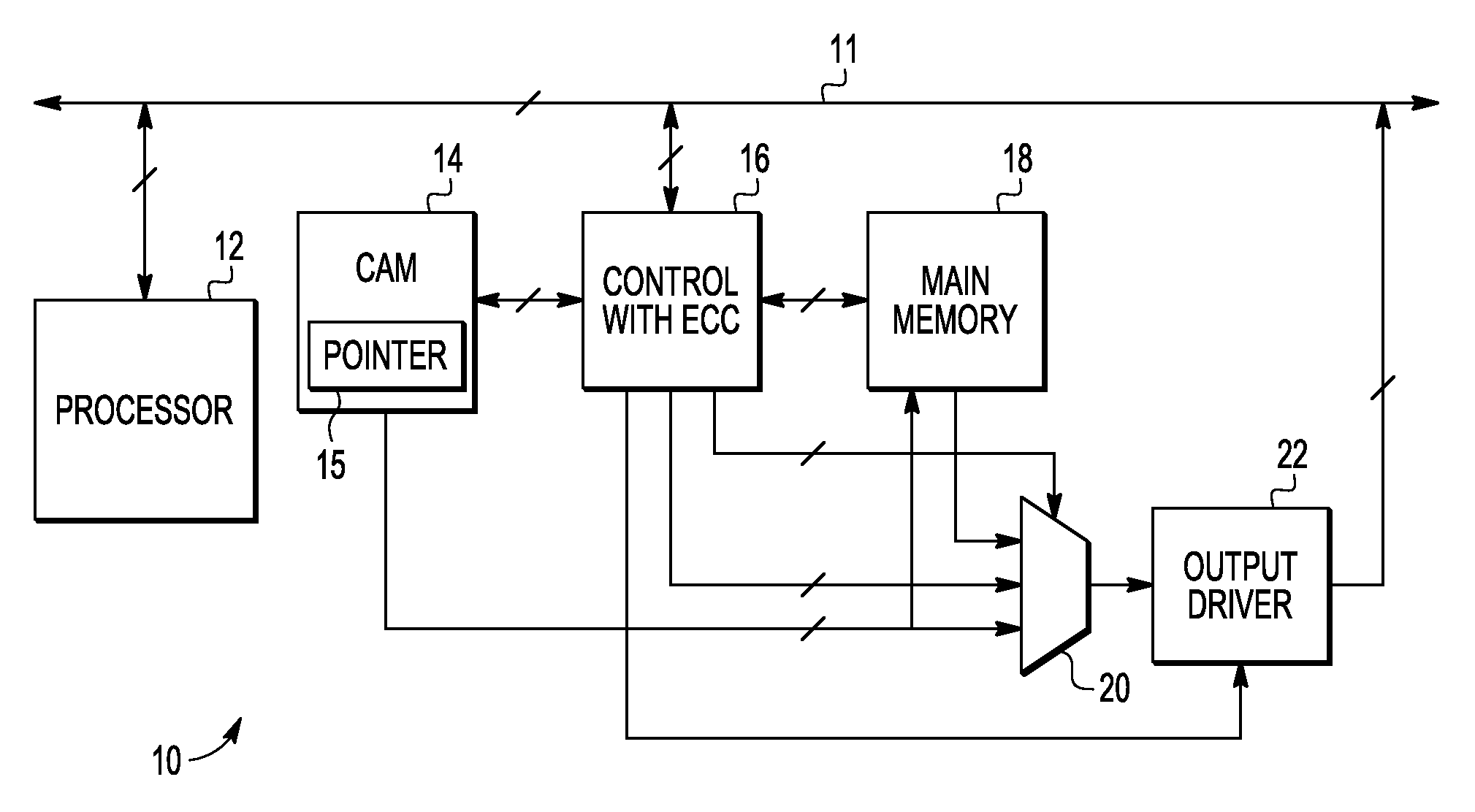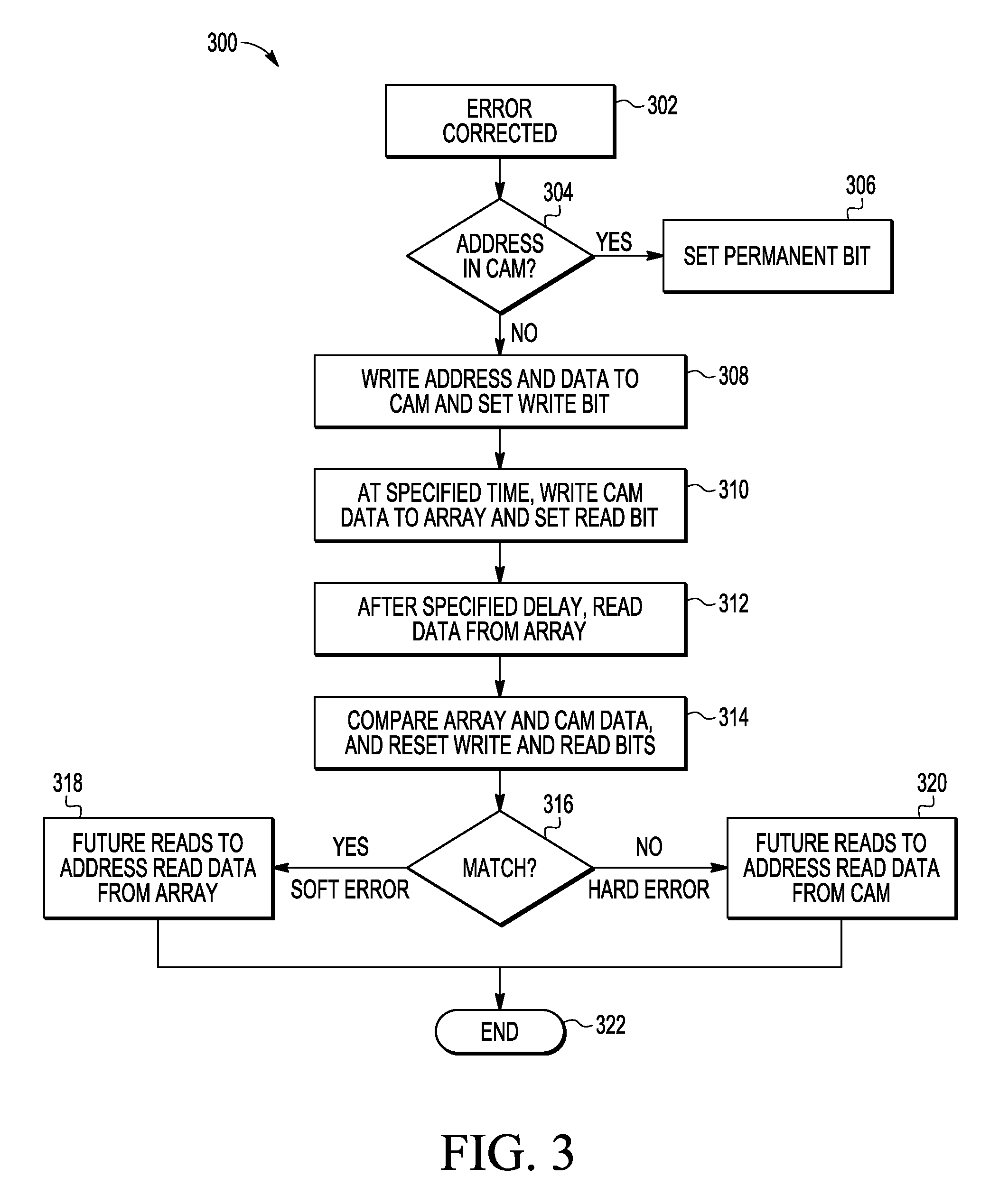Memory ECC with hard and soft error detection and management
a memory and error detection technology, applied in the field of memory devices, can solve the problems of more severe ser and limited memory reliability, conventional ecc memory designs cannot correct a hard failure at a data element, and the need for multi-bit error correction,
- Summary
- Abstract
- Description
- Claims
- Application Information
AI Technical Summary
Benefits of technology
Problems solved by technology
Method used
Image
Examples
Embodiment Construction
[0013]In this disclosure, an improved ECC memory system, method, and apparatus are described that address various problems in the art where various limitations and disadvantages of conventional solutions and technologies will become apparent to one of skill in the art after reviewing the remainder of the present application with reference to the drawings and detailed description provided herein. In selected embodiments, an ECC memory system is described which uses a content addressable memory (CAM) and a main memory to provide hard and soft error detection and management. The CAM is used as a redundant memory for use in replacing locations in main memory that have been found to be defective, and includes storage for holding address and data, along with additional status bits (Write, Read, and Permanent) and a pointer to the first unused or least recently used (LRU) entry. Once found defective by one or more failures detected by ECC or other similar logic, the memory location is repl...
PUM
 Login to View More
Login to View More Abstract
Description
Claims
Application Information
 Login to View More
Login to View More - R&D
- Intellectual Property
- Life Sciences
- Materials
- Tech Scout
- Unparalleled Data Quality
- Higher Quality Content
- 60% Fewer Hallucinations
Browse by: Latest US Patents, China's latest patents, Technical Efficacy Thesaurus, Application Domain, Technology Topic, Popular Technical Reports.
© 2025 PatSnap. All rights reserved.Legal|Privacy policy|Modern Slavery Act Transparency Statement|Sitemap|About US| Contact US: help@patsnap.com



